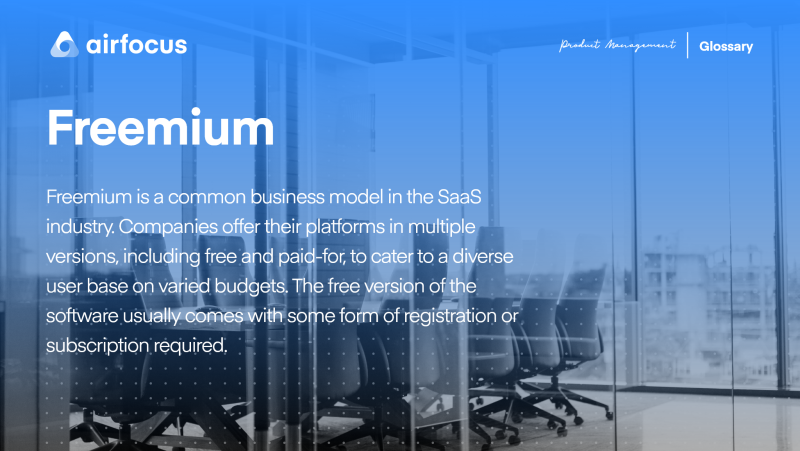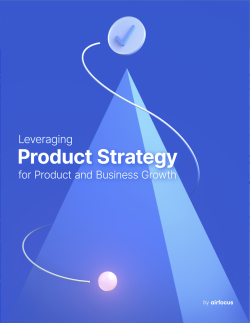Freemium
What is freemium?
Definition of freemium
Freemium is a common business model in the SaaS industry. Companies offer their platforms in multiple versions, including free and paid-for, to cater to a diverse user base on varied budgets. The free version of the software usually comes with some form of registration or subscription required.
Free versions should allow users to complete core tasks, but little else. The best free platforms demonstrate the full product’s value and incentivize users to upgrade to a paid version, though several tiers may be available beyond this. Each type of paid software will provide a selection of features and functions.
Freemium shouldn’t be confused with free trials. SaaS companies often tempt new users to sign up for their products with the promise of ‘14 days free’, during which they enjoy extensive access to the platform’s functions. The aim is that, within that trial period, users will recognize how beneficial the product is, wonder how they coped without it for so long, and purchase the full package once the two weeks (for example) ends. Freemium, on the other hand, is more focused on providing flexibility to a wide range of target users (while still encouraging people to upgrade where possible!).
Why do businesses use the freemium model?
SaaS companies utilize the freemium model for a number of reasons:
Freemium offers a compelling entry point for users
Primarily, a ‘free’ product is a core element which marketing teams can emphasize to great effect. A platform that’s available for free, even in a stripped-back form, is obviously a more appealing option for individuals and organizations looking for a cost-effective solution.
A freemium product offers every user value regardless of their budget: they can dive in and leverage its (albeit limited) features without spending a dime.
That doesn’t mean a SaaS brand can simply roll out a freemium model and expect conversions to spike as soon as word spreads. Instead, product teams still have to create a highly-competitive platform which solves users’ pain points and caters to the target user-base effectively.
Marketing teams, likewise, must invest as much hard work into promoting the freemium product as they would with any paid platform. For example, Spotify’s free version lends itself well to a compelling marketing campaign: users can access millions of tracks for free, just by accepting a few ads. It’s a simple marketing hook, though it must still differentiate itself from similar services, such as Google Play Music and Apple Music.
Freemium helps establish user loyalty
A brand will likely find it easier to establish and build a following of loyal users by implementing the freemium model. When your free version becomes a part of their daily life, users are less likely to jump to an alternative product if their requirements change, provided the cost of an upgrade isn’t excessive.
Product teams must plan their tiers carefully, to ensure paying subscribers are charged realistic prices and receive value for money across all packages. There’s no reason to think that users will be happy to invest in a subscription on a monthly or yearly basis if a competing SaaS brand offers the same, or more, for less. Product teams have to tailor their software to user goals, requirements and expectations to secure their loyalty over months or years.
Businesses can learn a lot about their product through a freemium set-up
Businesses offering freemium products can gather real user data which helps product teams recognize where their free version succeeds and fails. If certain features are being left ignored or users find the platform is almost useless without specific functions available in the paid version, teams can adapt to deliver a better free product.
This is a big help for companies who start with a free version exclusively (possibly supported by ads) but intend to release paid options in the near future. Data analysis empowers teams to make those paid tiers all the more competitive down the line.
For example, developing a deeper understanding enables teams to build more accurate user and buyer personas. Brands can leverage this data to cultivate more effective, targeted marketing that appeals to precise user needs and expectations.
Freemium works for users, too
Finally, freemium products serve a similar purpose to the free trials discussed above, without the imposed time limit. Users can take advantage of free versions to get a feel for a product’s layout, design, function, and overall performance, allowing them to make an informed decision as to whether it’s right for their business.
Are there any risks in using the freemium model?
For all of its benefits, the freemium model does have some inherent risks.
First, while free versions of a product cost users nothing, brands still have to pay to design, develop, build, launch, and maintain the software for years to come. This includes obvious overheads, such as salaries, hardware, utilities, advertising, etc. None of this comes cheap, especially for startups looking to generate revenue fast.
Another risk is that users simply won’t recognize the value in upgrading to a premium package. Again, product teams must think carefully when putting free versions of a product together: the right features must be left in to deliver a satisfying user experience, but there needs to be enough lacking to up-sell them to a paid-for version.
It’s a delicate balancing act. Too much, and the motivation is gone. Not enough, and users may be so frustrated they search for other freebies instead.
Another potential risk is that businesses must build a huge user base to generate ROI from free offerings. If you have thousands of individuals and companies subscribing to a free version, at least a small portion must be willing to upgrade to ensure the product is profitable.
Otherwise, the free version may need to be scrapped, which creates another risk: chasing away those users who refuse to pay for the software, no matter how competitive the rates may be.

General FAQ

Glossary categories
Create effective product strategy

Experience the new way of doing product management








